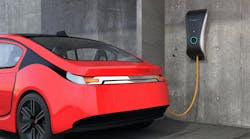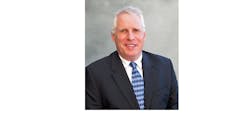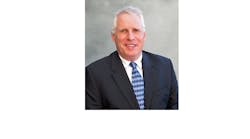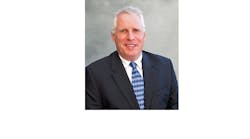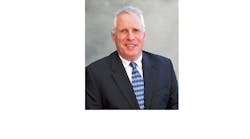As surge protection manufacturers continue to bring greatly improved and safer products to market, the testing and certification process for these products has become increasingly complicated, time consuming and expensive as a result of ever-evolving codes and standards. These requirements are proving extremely difficult for some manufacturers to meet in the current economic climate. As a result, many manufacturers of surge protective devices (SPDs) are opting to go to market without a UL listing on their products.
A product without a UL listing doesn't necessarily mean it is unsafe or does not meet relevant codes and standards, but it does carry significant risks and ultimately leaves specifiers, consultants and end users confused about which products actually are safe and under which standards those products have been tested. This confusion undermines consistency in the marketplace and is bad for the consumer. Having a single standard that is well understood and consistently applied across all products ensures that consumers are receiving the safest products in the industry and forces manufacturers to compete on a transparent and level playing field. For this reason, it does matter where products are tested and certified.
The Surge Protection Industry and Underwriters Laboratories
It has been a difficult few years for manufacturers of SPDs and related equipment. In February 2007, a new UL standard — dubbed UL 1449 2.5 Edition — went into effect with the primary focus on elevating safety standards for surge protective devices. This change forced many manufacturers to spend hundreds of thousands of dollars in time and fees to redesign their products and forced other manufacturers out of the business all together. Additionally, UL has announced a new, more rigorous standard (UL 1449 3rd Edition) which will go into effect in September 2009 — a mere 18 months after the last standard was enacted.
In the interim, UL instituted a change in its pricing structure for certification of new SPD products, resulting in a substantial increase in the certification cost for manufacturers. Lead times quoted by UL for product certification have increased dramatically, and all indications are that there will only be more delays over the next 12 months due to the sheer volume of products that will need to be certified. All of this has left many in the industry wondering whether the benefit of having UL certification outweighs the costs - both in time and money. UL bashing at industry events and trade shows has become a regular pastime and the drumbeat appears to be getting louder. Several companies in our industry have thrown their hands up in frustration and chosen to forego UL certification for their products.
This is a mistake. While the entire UL certification process for SPDs has become dramatically more complicated, time consuming and expensive, there is still significant value that the organization brings to the industry. To be sure, there are improvements that can, and should, be made on UL's part to streamline the certification process, shorten the time for manufacturers to bring new products to market, charge a rational price for certification and improve overall customer service. Companies in the surge protection industry — the customers of UL's services — should continue to push the organization to improve. But electing to forego UL certification in lieu of another lab certification, or worse, bringing non-certified products to market is not the answer either. Despite its flaws, UL serves a significant purpose in our industry and brings many benefits that are good for manufacturers and end-users alike.
The Case for Underwriters Laboratories
Expertise
While other sources may be able to conduct electrical testing as outlined by UL, the fact is that UL authored the standard that defines the acceptable level of safety for the industry. While many other good and reputable organizations can test to UL standards, only UL can offer the insight and interpretation of the letter and spirit of the standard that they authored. UL has been performing independent product safety testing for over 100 years. In 2007, over 21 billion products were marked with a UL mark and almost 100,000 product evaluations were conducted by, or on the behalf of, UL. This experience base allows for a very clear and robust understanding of the requirements necessary for a product to be called “safe” and “in compliance.”
There is an inherent problem with allowing multiple and different “certification sources” in any industry. While other labs currently involved in the testing of SPDs are all credible and capable certifiers, at some point, the certification process is compromised and the intent of the standard is deteriorated. There have been cases identified where products that were tested and failed at UL were somehow passed at another lab. If certification at one lab becomes easier and all manufacturers begin certifying their products at that lab, the public good is not served.
Safety advocacy role
UL's main focus and the rationale behind the recent changes in requirements are all focused on improving the overall safety of the surge protection products offered in the market. No one can argue that safer products are not desirable, least of all the end consumers and engineering firms specifying surge protection in their electrical systems. However, it's UL's advocacy role that provides the organization a level of credibility separate from other for-profit testing organizations. For example, UL is closely tied to the U.S. Consumer Products Safety Commission and is intimately familiar with the safety standards and laws affecting all types of products. Additionally, UL has a significant presence in Washington, D.C., and is heavily involved in lobbying efforts on behalf of consumer safety. Activities such as these provide UL with a unique position that enhances its role as a neutral, third-party testing expert on behalf of consumers.
Insurance/inspectors
Underwriters Laboratories was established in 1894 as a not-for-profit entity to establish standards, testing and uncover hazards related to the growing field of electrical equipment. Over 100 years ago, insurance companies relied on UL to establish the standard for safe products to prevent fire and loss of life, as well as to protect their profits. Since that time, billions of products have been certified with UL markings, with almost 100,000 tests conducted each year. These statistics give insurance companies and local inspectors a reasonable degree of security when determining the safety of electrical products. Simply put, the insurance industry and state inspectors back UL's record on safety.
Many insurance companies will not insure projects if the products used are not UL listed or recognized. Specifiers and consultants run the significant risk of having their clients' project insurance voided or unobtainable if they recommend non-UL products. Additionally, many local inspectors require or prefer UL products in electrical projects and are much less likely to challenge electrical designs that use UL certified products.
Halting the “arms race.”
A recent study conducted by ANSI/IEEE in conjunction with the National Lightning Detection Agency recorded nearly 35,000 lightning strikes as two storm fronts converged over Tampa Bay, Fla. This rare opportunity demonstrated that over 98 percent of all surges generated from these strikes were less than 60kA, with the absolute highest stroke recorded at 185kA. Other studies have reached similar conclusions of maximum energy levels created by lightning storms.
However, many competitors in the surge protection industry choose to compete by offering products with higher and higher protection ratings. This escalation, or “arms race,” has progressed to ridiculous proportions (with products now offered in excess of 1,000,000A of protection) and has strayed from the intent to provide consumers and end-users with products designed to meet “real world” situations. Most of these high protection products achieve higher performance by sacrificing safety capabilities. While this may be good for the sellers of these products — they are able to charge higher and higher prices for larger kA ratings — it's ultimately harmful to buyers who are paying for products that they do not need and end up with a less safe product.
The new UL 1449 3rd Edition standard will assist in regulating this practice by limiting all manufacturers' product ratings to one of four standardized levels — 3kA, 5kA, 10kA and 20kA. Unnecessarily high-rated products will all be leveled to 20kA, which will help the customer in evaluating different products against each other and force manufacturers to compete in a more consistent manner, with the focus remaining on safety.
In an industry with virtually hundreds of competitors and different products from which to choose, it's becoming more and more difficult for consumers to evaluate the differences among products and ratings of surge protective devices. The current trend of manufacturers of surge-protection equipment certifying their products using multiple and different labs significantly adds to the overall confusion in the marketplace. In this scenario, no one wins. There is a significant and important need for a strong UL to ensure that consumers get safe, reliable products for the money they spend. There is a big difference between being certified by UL (having a UL sticker) and being “tested to UL standards” by a third-party lab. Only UL's expertise and century-long experience as a safety advocate for electrical products provides insurance companies, inspectors, specifiers, consultants and end users with the security of knowing that their products are safe. This benefits everyone in the long run.
Todd Dauphinais is president of EFI Electronics, Salt Lake City, Utah. Aaron Davis is the company's vice president of marketing. Dauphinais can be reached at [email protected], and Davis can be reached at [email protected].
Now owned by Schneider Electric, EFI Electronics has been a manufacturer of surge-protection products and solutions for almost 30 years. According to the company's website, utility industry experts estimate that problems resulting from transient voltage surges cost U.S. companies $32 billion annually. This figure not only includes the high price of direct damage to electrical distribution systems, electronic equipment, software and tools, but also the cost of lost productivity.
